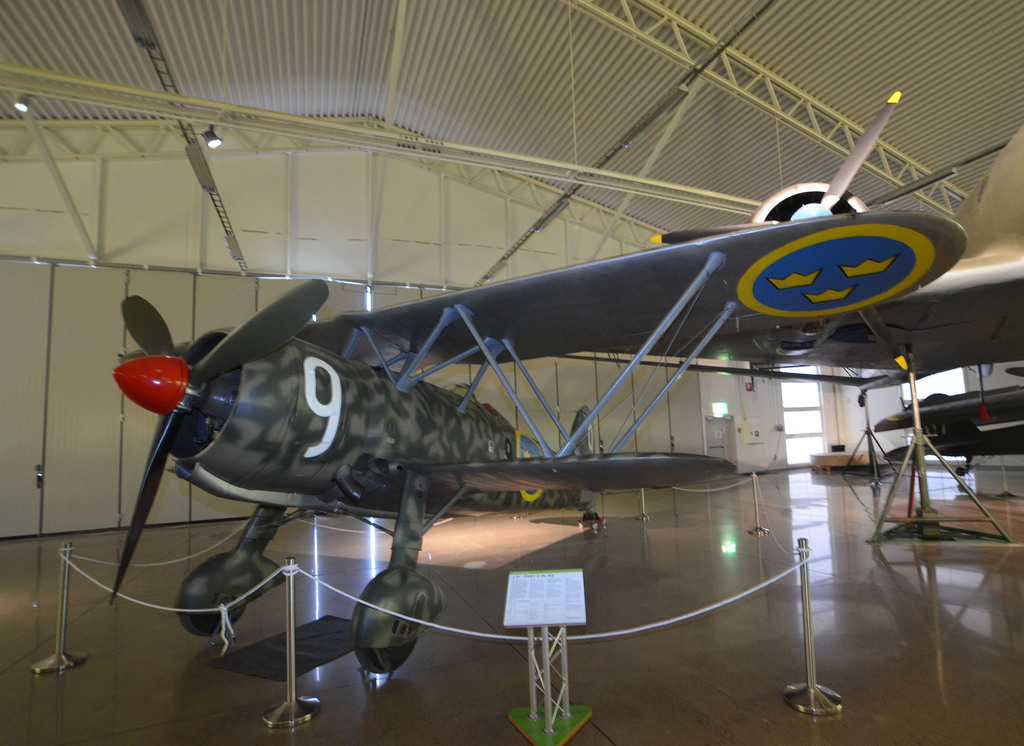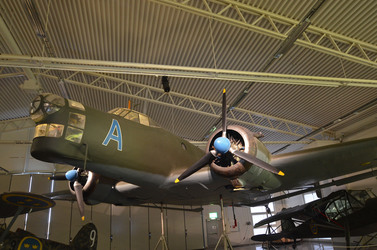Sign In
CloseThe Fiat CR.42 Falco ("Falcon", plural:Falchi) was a single-seat sesquiplane fighter which served primarily in Italy's Regia Aeronautica before and during World War II. The aircraft was produced by the Turin firm, and entered service, in smaller numbers, with the air forces of Belgium, Sweden and Hungary. With more than 1,800 built, it was the most widely produced Italian aircraft to take part in World War II.[4] The Fiat CR.42 was the last of the Fiat biplane fighters to enter front line service as a fighter, and represented the epitome of the type.
The Swedish Air Force purchases of various types of Italian combat aircraft in 1939–41 were an emergency measure caused by the outbreak of war. There were no other nations willing to supply aircraft to a small neutral country and domestic production would be insufficient until 1943. From 1940 to 1941, Sweden received 72 CR.42s, which were equipped with radios, 20-millimetre (0.79 in) armour plate behind the pilot and ski landing gear. The Swedish aircraft were designated J 11.[54]
The J 11s were initially assigned to the F 9 wing, responsible for the air defence of Gothenburg, but were transferred to the newly established F 13 wing in Norrköping in 1943 when F 9 received more advanced J 22 fighters.
The J 11s operating from Kiruna, in the north of Sweden, were equipped with ski undercarriage. In spring 1942, the J 11s of 1. Division were moved to Luleå airfield. The J 11s scrambled several times to intercept German aircraft violating Swedish borders, but usually failed to make contact. The J 11s of 2. and 3. Divisions based in Gothenburg managed to intercept intruders a few times, forcing them to leave Swedish airspace.[55]
During their service in Swedish Air Force, the CR.42 suffered many accidents, sometimes because of the poor quality of materials used by the Fiat factory. By the end of 1942, eight had been lost, and 17 more by the end of 1943. In all, over 30 CR.42s were lost due to accidents and mechanical failures.[56] Swedish pilots appreciated the J 11's formidable close-in dogfighting abilities;[57] however, they complained about low speed, insufficient armament and the open cockpits that were unsuited for the severe climate of Scandinavia.[56]
The remaining J 11s of the F 13 wing were decommissioned for good by the Air Force by 14 March 1945. A total of 19 aircraft were sold to a civilian contractor, Svensk Flygtjänst AB, who used 13 of them as target tugs for one season, although the type was not well suited for the role. Another six J 11s were delivered to Svensk Flygtjänst AB as a source for spare parts. The aircraft were given Swedish civil registrations. The last J 11 was removed from the register in 1949.
One surviving Swedish "Falco" was preserved.[56] It was stored at the F 3 wing; the aircraft was "hidden away" for a future museum. Number NC.2453, marked as 9 9, is today on a permanent static display in the Swedish Air Force Museum (Flygvapenmuseum) in Linköping
Submission Information
- Views:
- 646
- Comments:
- 0
- Favorites:
- 0
- Rating:
- General
- Category:
- Visual / Photography




